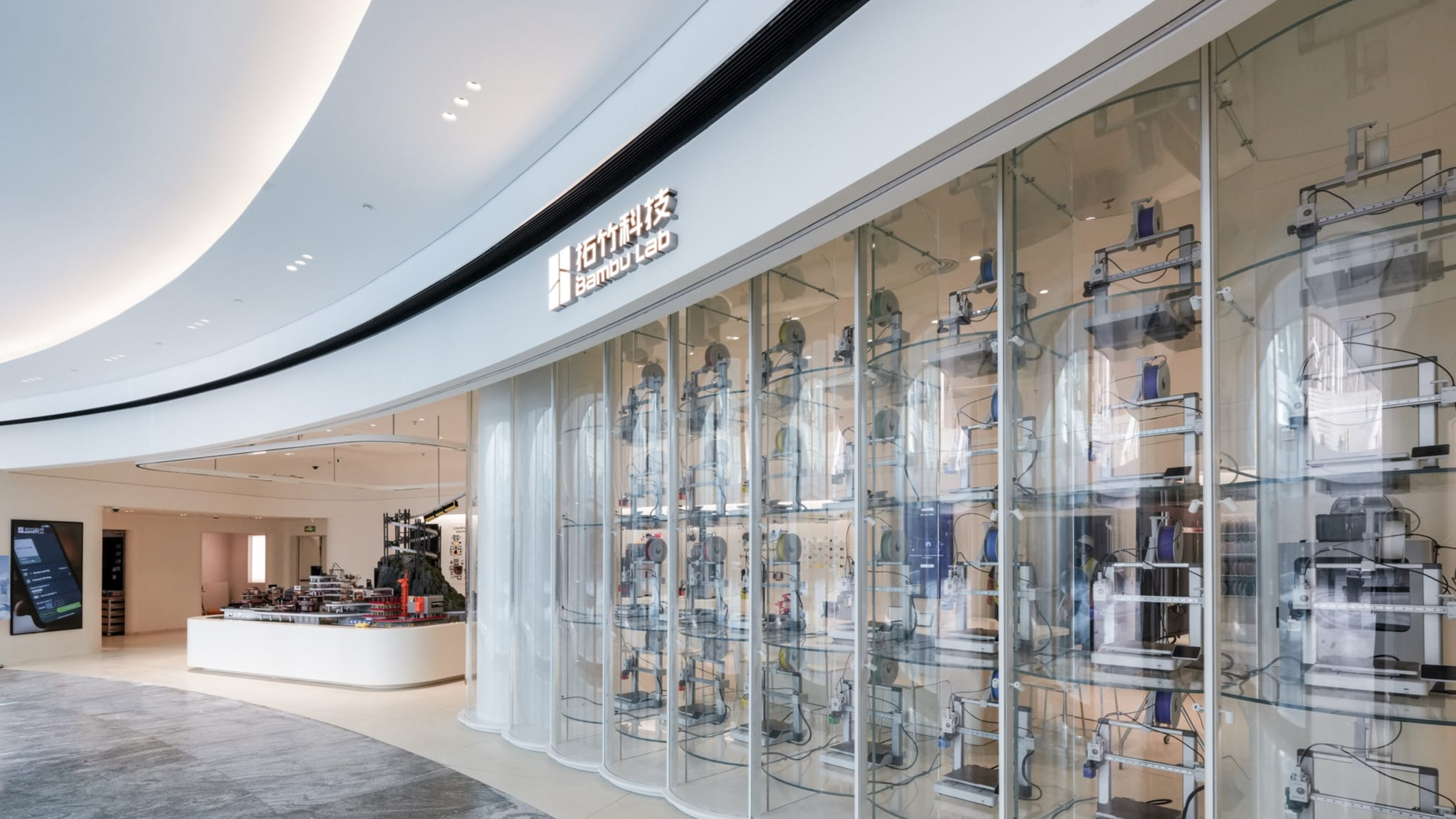
The first brick-and-mortar retail store opened by 3D printing company Bambu Lab in Shenzhen, Guangdong province makes 3D technology more accessible to the general public, driving a new trend in personalized, tech-driven consumption.
Spanning over 200 square meters, the newly opened store in Shenzhen’s Nanshan district — which is claimed to be the largest store of its kind — opens up an immersive wonderland for 3D printing fans.
The most eye-catching elements include a giant sandbox showcasing different 3D printing scenarios, a wall of advanced printers working simultaneously, and a 3D printed train circling around the store’s ceiling.
READ MORE: China’s 3D-printed mini jet engine triumphs in pioneering flight test
Exhibition walls are hung with various kinds of 3D printed products, from photos to model guns, Christmas trees, table tennis paddles, and shoes that can actually be worn.
Consumers can explore and purchase the company’s flagship printers, select consumables, appreciate excellent designs, and experience the full 3D printing ecosystem at the store. There are also designated spaces for model assembly enthusiasts and for children’s education.
Established only five years ago, Shenzhen-based Bambu Lab has grown into a world-leading powerhouse in consumer-level 3D printing, launching various types of printers. In 2024, it achieved the highest sales in the world for consumer 3D printers.
In addition to selling 3D printers and consumables, it has also launched the MakerWorld community to connect enthusiasts using various brands. The world's largest 3D printing community, MakerWorld has attracted over 10 million members and generated over 1 million models.
Since July, the community has also connected with Tencent’s Hunyuan AI-powered large model, allowing for the rapid generation of high-quality 3D models.
Compared to industrial-scale production, consumer-level 3D printing often uses affordable printers with fused deposition modeling (FDM) technology to facilitate personalized creation, accessory production, and education.
Surveys show that the global consumer-grade 3D printing market is growing at an average annual rate of around 20 percent. It is projected that, from 2025 to 2029, the market size will increase from $4.9 billion to $16.9 billion. Notably, Chinese companies produce around 90 percent of these printers worldwide.

Bai Xi, a product consultant at Bambu Lab, said that as an emerging technology, 3D printing is primarily used in the industrial and commercial sectors. The opening of this store is aimed at allowing more consumers to experience affordable 3D printing technology and fulfill their personalized creation interests.
Located in a bustling shopping mall, the store was inaugurated on Tuesday, a day before the National Day and Mid-Autumn festival holiday break began. Bai anticipates that the store will maintain a high volume of visitors during the period, and encourages residents and tourists seeking innovative experiences to visit the store and explore.
Zhang Ye is engaged in the design of nonstandard products, often using Tuozhu’s printers for experimental verification. When visiting the store shortly after its opening, he printed a small dog toy for free.
He said he was particularly interested in the store’s mini market, where the items on display are not hardcore engineering products, but everyday items. They include wings-shaped rings and cellphone holders, as well as necklaces with orchid pendants. “It gives me a sense that 3D printing is integrating into our daily lives,” he said.
Zhang said he hopes that in the future, there will be a wider range of printing materials and the equipment will be more stable and intelligent, utilizing AI technology to repair models and evaluate model structures.
A technology video creator also surnamed Zhang recorded an episode of his visit to the store. He said in the video that, currently, 3D printing technology is still mainly used by tech and DIY enthusiasts.
READ MORE: China promotes development of key cutting-edge materials
He believes that the presence of the store offers a more tangible experience than online product introductions or reviews and will inspire more people to understand and utilize the technology.
As consumer-grade 3D printing technology is already mature, Zhang said, the development of software and an ecosystem are key. “It’s not just about creators, we need to make the technology more accessible to a broader range of consumers,” he said.
At the store, a tech practitioner said he plans to bring his child to explore the space in the hope of fostering his creativity and interest in science. Meanwhile, an anime fan was surprised to discover that the operating threshold for entry-level 3D printing is quite low, making it accessible to beginners like her.
Contact the writer at bingcun@chinadailyhk.com


